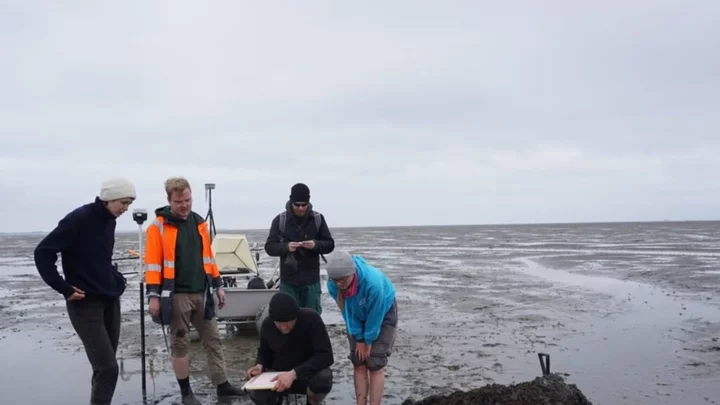
Remains of the 'Atlantis of the North Sea' discovered in Germany
The remains of a church from a sunken town known as the 'Atlantis of the North Sea' has been discovered beneath the mud on Germany's coast. The church is believed to be part of a site called 'Rungholt' located in the Wadden Sea. The town, which was previously thought to be a local legend, has not been seen since 1362 after it was submerged beneath the waves during an intense storm. However, new research has shown that the town really did exist and that they had built reinforcements around the settlement to protect them from the severe elements. The research was carried out on the area by archeologists from Kiel University, Johannes Gutenberg University Mainz, the Center for Baltic and Scandinavian Archaeology, and the State Archaeology Department Schleswig-Holstein. Sign up to our free Indy100 weekly newsletter Searching the Wadden Sea which is the longest stretch of intertidal sand and mud flats on Earth, the team, using geophysical imaging technology found man-made mounds that had been constructed to protect the town against the tides. Amongst this structure were the foundations of a building which the team determined had to be a church which may have been the location of the town centre. In a statement, Dr. Dennis Wilken, a geophysicist at Kiel University of Kiel University said: "Settlement remains hidden under the mudflats are first localized and mapped over a wide area using various geophysical methods such as magnetic gradiometry, electromagnetic induction, and seismics." Dr. Hanna Hadler from the Institute of Geography at Mainz University added: "Based on this prospection, we selectively take sediment cores that not only allow us to make statements about spatial and temporal relationships of settlement structures, but also about landscape development." Dr. Ruth Blankenfeldt, an archaeologist at ZBSA also suggested that the "special feature of the find lies in the significance of the church as the centre of a settlement structure, which in its size must be interpreted as a parish with superordinate function." The storm that washed away Rungholt has gone down in history as one of the largest to ever hit the region, affecting not just Germany but also the Netherlands, Denmark and the UK. The storm happened on January 1362 and has since been referred to as "the great drowning of men." According to historical reports, Rungholt was once a busy trading port for fishermen but was also populated by taverns, brothels and churches. Have your say in our news democracy. Click the upvote icon at the top of the page to help raise this article through the indy100 rankings.
2023-05-27 23:48

As Elizabeth Holmes heads to prison for fraud, many puzzle over her motives
As Elizabeth Holmes prepares to report to prison next week, the criminal case that laid bare the blood-testing scam at the heart of her Theranos startup is entering its final phase
2023-05-27 22:18
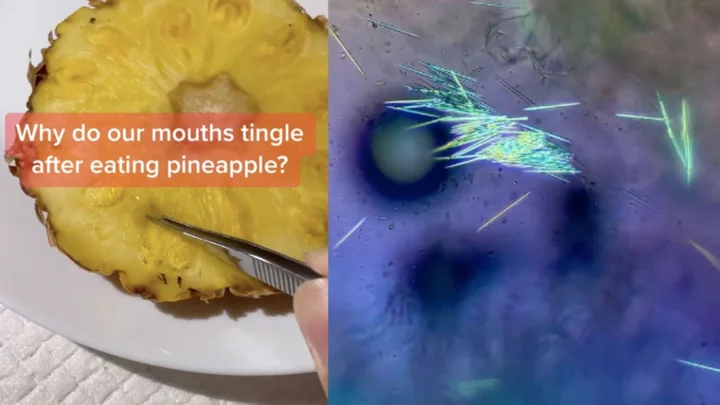
Pineapple 'needles' revelation has people questioning whether they'll eat the fruit again
A revelation about pineapples only made noticeable thanks to a TikTok account and a microscope, has people reevaluating whether they are allergic to the fruit or not. You may have noticed that whenever you've eaten a chunk of the delicious citrus fruit, you are sometimes greeted with an odd tingling sensation in your mouth. Well, if you've ever been curious about what that actually is then the TikTok account SF Microscopy is here to help. The account analyses all sorts of things under a microscope and exposes all the fascinating and dare we say worrying things that lie within everyday objects that the naked eye cannot see. One of the biggest videos on the account, with 35 million views, is about a pineapple. Sign up to our free Indy100 weekly newsletter In the caption, the person behind the account writes: "One of my favorite fruits is pineapple, but every time I eat them, my mouth tingles. I read that the fruit contains raphides! Kiwis, grapes, taro, and yams also have large amounts of these crystals. These needles serve as a defensive function against insect herbivores to deter them from eating the plant’s fruits and protect the seeds. The needles work with other chemical substances, like bromelain in the pineapple, to amplify the effects." If that sounds a bit farfetched then take a look at the video for yourself and you might find that its even more alarming than you might have imagined. @sf_microscopy One of my favorite fruits is pineapple, but every time I eat them, my mouth tingles. I read that the fruit contains raphides! Kiwis, grapes, taro, and yams also have large amounts of these crystals. These needles serve as a defensive function against insect herbivors to deter them from eating the plant’s fruits and protect the seeds. The needles work with other chemcial substances, like bromelain in the pineapple, to amplify the effects. #microscope #microbiology #underthemicroscope #microscopy #microcosmos #nature #pineapple #crystals #fyp #fypage #fypシ The fact that these needles are real has people second-guessing the feeling they experience when they eat pineapples. One person wrote: "My mouth be sore as hell after going crazy on them pineapples & kiwis." Another added: "So ummmm…I’m not allergic to pineapple????" A third said: "Makes sense that when i accidentally inhaled pineapple juice i just about died." While a fourth person said: "It’s gonna stop me i dont feel like being stabbed." Will you stop eating pineapples now that you know this? I think this writer might be willing to live in blissful, delicious ignorance. Have your say in our news democracy. Click the upvote icon at the top of the page to help raise this article through the indy100 rankings.
2023-05-27 19:24
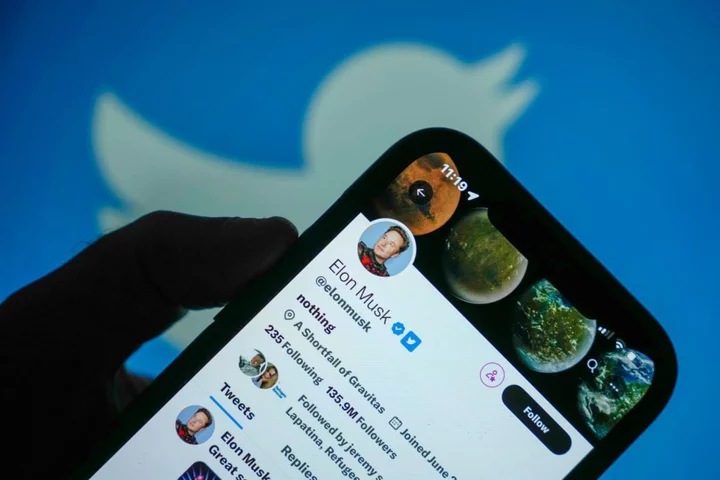
Twitter Withdraws From EU Disinformation Code, Commissioner Says
Twitter exited the voluntary European Union’s Code of Practice on Disinformation, the bloc’s Internal Market Commissioner Thierry Breton
2023-05-27 15:58
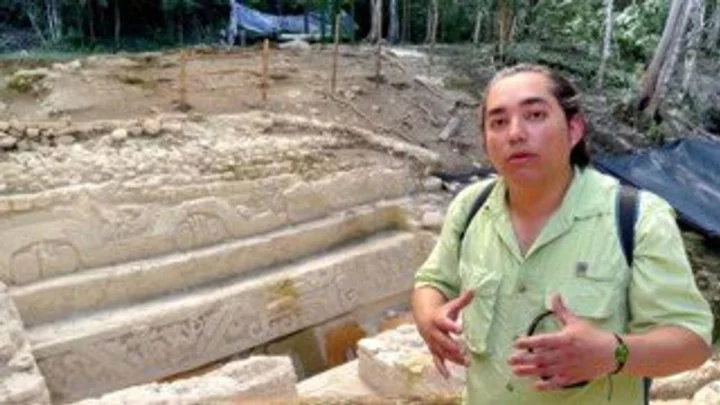
Scientists discover 'impossible' ancient Mayan city in remote jungle
It feels like every day there’s a science story that comes along ready to blow our tiny minds, and today is no exception. A series of ancient interconnected cities have been discovered in the remote El Mirador jungle Guatemala, and it’s changing our entire understanding of the ancient civilisation. More than 400 settlements have been uncovered with some dating back as far as 1,000 BC. They’re linked by roads too, and it’s led them to be described as “the first freeway system in the world”. Sign up to our free Indy100 weekly newsletter Richard Hansen, a research professor at the University of Idaho, is an expert on the project and he’d called the findings a “game-changer”. It was previously thought that the Mayan peoples were nomadic, but these cities have changed the scientific community’s understanding. Speaking to the Washington Post, Hansen said: "We now know that the Preclassic period was one of extraordinary complexity and architectural sophistication, with some of the largest buildings in world history being constructed during this time.” On top of the 110 miles of interconnected roads, the discoveries also showed evidence of organised agriculture and even hydraulic systems. The findings are the result of work which first began in 2015, which saw lidar technology uncovered signs of ancient structures below the surface. Archaeologist Enrique Hernández, from San Carlos University said about the findings: “Now there are more than 900 [settlements]… We [couldn’t] see that before. It was impossible,” he said. Have your say in our news democracy. Click the upvote icon at the top of the page to help raise this article through the indy100 rankings.
2023-05-27 15:51

As Elizabeth Holmes heads to prison for fraud, questions remain about her motives
As Elizabeth Holmes prepares to report to prison next week, the criminal case that laid bare the blood-testing scam at the heart of her Theranos startup is entering its final phase
2023-05-27 13:18

EU official says Twitter abandons bloc's voluntary pact against disinformation
A top European Union official says Twitter has dropped out of the bloc's voluntary agreement to combat online disinformation
2023-05-27 07:15

US jury says Google owes Sonos $32.5 million in smart-speaker patent case
By Blake Brittain (Reuters) -Alphabet Inc's Google must pay $32.5 million in damages for infringing one of smart-speaker maker Sonos
2023-05-27 05:53
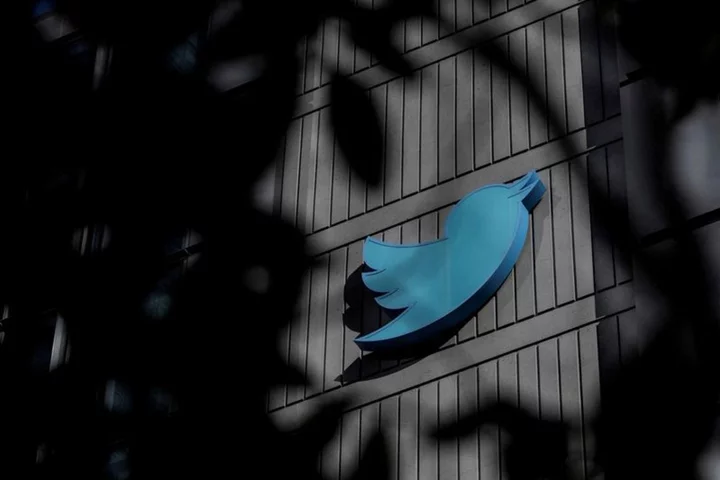
Twitter cannot hide from EU rules after exit from code, EU's Breton says
By Foo Yun Chee BRUSSELS Twitter cannot run away from its obligations even after quitting a voluntary EU
2023-05-27 05:52

OpenAI boss downplays fears ChatGPT maker could leave Europe over AI rules
OpenAI CEO Sam Altman is downplaying worries that the ChatGPT maker could exit the European Union if it can’t comply with the bloc’s strict new artificial intelligence rules
2023-05-26 23:55

Hugh Grant's lawsuit alleging illegal snooping by The Sun tabloid cleared for trial
A London court has rejected an attempt by the publisher of The Sun newspaper to throw out a lawsuit by actor Hugh Grant alleging that journalists and investigators it hired illegally snooped on him
2023-05-26 23:29
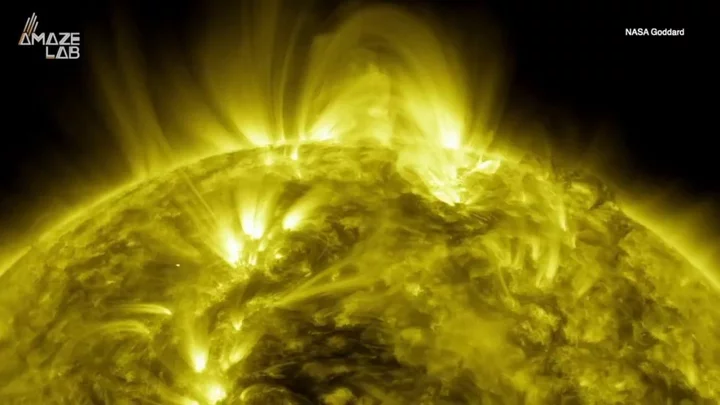
‘Monster stars’ 10,000 times bigger than the Sun detected for first time
Scientists have been peering into the depths of space, looking right back at the early days of the universe, and they’ve found something very interesting indeed. Researchers using the James Webb Space Telescope have come across a discovery that indicates some of the very earliest stars to ever form in the universe were staggering in scale, measuring 10,000 times bigger than the Sun. "Today, thanks to the data collected by the James-Webb Space Telescope, we believe we have found a first clue of the presence of these extraordinary stars," says astrophysicist Corinne Charbonnel of the University of Geneva in Switzerland, in research published in Astronomy & Astrophysics. These features are huge collections of between 100,000 and 1 million stars known as globular clusters, which all feature similar properties. Scientists estimate that they were all formed at the same time. Sign up to our free Indy100 weekly newsletter They’re remnants of the ancient universe and have been described by researchers as "fossils". The cores of these stars are much hotter than those we see in stars today, and scientists suggest it could be down to an excess of hydrogen burning at high temperatures. It’s thought that smaller stars collided with the supermassive stars and relished their energy. However, now most of these global clusters are approaching the very end of their life spans. "Globular clusters are between 10 and 13 billion years old, whereas the maximum lifespan of superstars is two million years," said Mark Gieles, previously at the University of Surrey but now at the University of Barcelona, back in 2018. "They therefore disappeared very early from the clusters that are currently observable. Only indirect traces remain." The researcher states: "If the supermassive star scenario can be firmed up by future studies, this would provide an important step for our understanding of globular clusters and for the formation of supermassive stars in general, with numerous important implications.” Have your say in our news democracy. Click the upvote icon at the top of the page to help raise this article through the indy100 rankings.
2023-05-26 23:22
